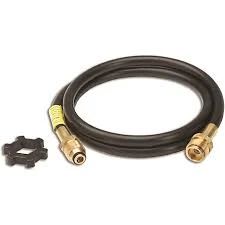335345435
Sep . 19, 2024 12:24 Back to list
hydraulic hose ends
Understanding Hydraulic Hose Ends Critical Components in Fluid Power Systems
Hydraulic systems play a pivotal role in various industries, enabling the efficient transfer of power through fluid movement. At the heart of these systems are hydraulic hose ends, integral components that connect hoses to other components within the hydraulic circuits. This article delves into the significance of hydraulic hose ends, their types, and considerations for selection and maintenance.
Hydraulic hose ends serve as the termination points of hoses, allowing them to interface with pumps, cylinders, valves, and other machinery. These connectors not only secure the hoses to prevent leaks but also facilitate the effective transfer of hydraulic fluid under pressure. The reliability of a hydraulic system largely hinges on the quality and compatibility of its hose ends.
There are several types of hydraulic hose ends, each designed for specific applications and standards. Common types include JIC (Joint Industry Council), NPT (National Pipe Thread), and ORFS (O-Ring Face Seal) fittings. JIC fittings, characterized by a 37-degree flared design, are popular in high-pressure applications due to their strong sealing capabilities. NPT fittings utilize tapered threads that create a tight, pressure-resistant seal when engaged, making them suitable for various industrial applications. ORFS fittings rely on an O-ring to provide a leak-free connection, often favored in hydraulic systems where vibration and movement are significant concerns.
hydraulic hose ends

When selecting hydraulic hose ends, there are several critical factors to consider. First and foremost is compatibility with existing hose types and sizes. Hydraulic hoses come in various diameters, and selecting the right size fitting is crucial for maintaining the system's integrity and performance. Additionally, the chosen hydraulic hose end must be compatible with the operating pressure and temperature of the system; using components outside of their rated specifications can lead to catastrophic failures.
Material choice is another essential consideration. Hydraulic hose ends are typically made from steel, stainless steel, or brass. The chosen material should withstand the operating environment's pressures, corrosive elements, and temperatures. For example, stainless steel may be preferred in corrosive settings, while standard steel fittings may suffice in less demanding applications.
Regular maintenance and inspection of hydraulic hose ends are necessary to ensure long-term reliability. Hose ends should be checked for signs of wear, corrosion, or damage, as well as proper torque to prevent leaks. Implementing a routine maintenance schedule can significantly extend the lifespan of hydraulic components and prevent unscheduled downtimes.
In conclusion, hydraulic hose ends are crucial for the functionality and reliability of hydraulic systems. By understanding their types, material selection, and maintenance needs, industries can enhance the performance of their hydraulic applications, ensuring efficient and safe operations. As technology advances, ongoing innovations in hose end designs continue to improve their efficiency and durability, highlighting the importance of staying informed about the latest developments in hydraulic technology.
-
High-Quality Distribution PTFE Hose for Industrial Flexibility
NewsJul.23,2025
-
Durable Pressure Washer Rubber Hose for Hot Water & High Flexibility
NewsJul.22,2025
-
Twin Hydraulic Hose for Efficient Fluid Transfer | Durable & Flexible
NewsJul.22,2025
-
Twin Hydraulic Hose | High Pressure & Durable
NewsJul.21,2025
-
Discount Hydraulic Hose Factories | Top Quality & Discounts
NewsJul.20,2025
-
EN856 4SP Hydraulic Hose - High Pressure & Durable
NewsJul.20,2025



